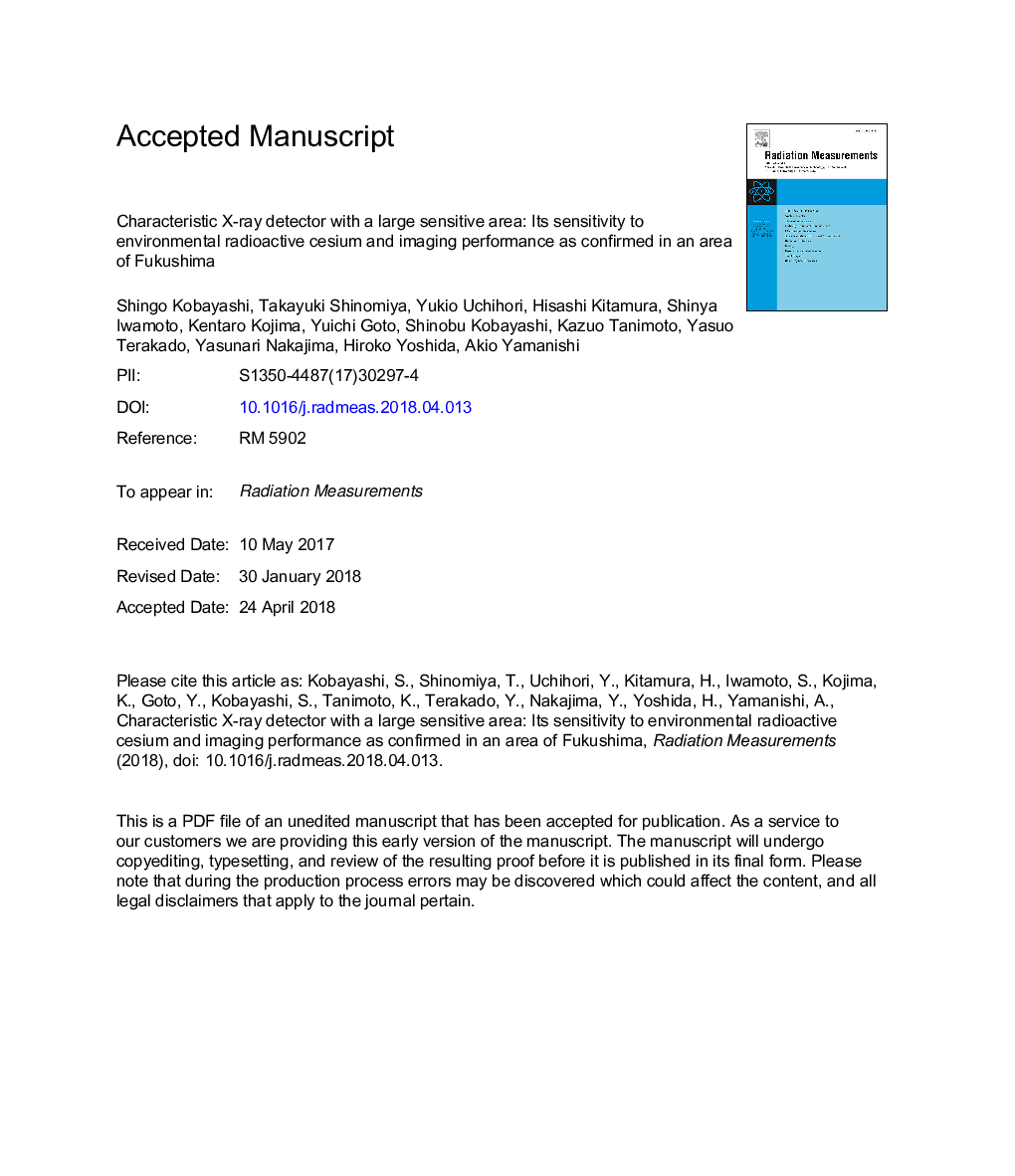| Article ID | Journal | Published Year | Pages | File Type |
|---|---|---|---|---|
| 9953950 | Radiation Measurements | 2018 | 45 Pages |
Abstract
An X-ray detector which we call the characteristic X-ray detector (CXRD) with a large sensitive area of 199â¯cm2 was studied as a candidate imaging device with high sensitivity, light weight and low-cost features to visualize environmental 137Cs deposited after the Fukushima Dai-ichi Nuclear Power Station accident. The CXRD has a directionality for its sensitivity and it is able to visualize a spatial distribution of 137Cs by scanning the flux of 32â¯keV characteristic X-rays due to disintegration of 137Cs instead of imaging the 662â¯keV gamma-rays from 137Cs. Our experimental results showed that the counting efficiency of the CXRD was 105 counts per second for a 1 MBq 137Cs source at a distance of 1â¯m and the CXRD had a very high counting efficiency for a certain direction. We estimated the potential sensitivity of the CXRD when it was used in the scanning mode to image an area of 2Ï sr. The CXRD was tested in a contaminated forest in Fukushima Prefecture and images of the spatial distribution of 137Cs in the forest were successfully obtained. We found that most of the 137Cs was present in the forest floor and no 137Cs was detected in the atmosphere and the tree canopy. The CXRD is useful because of its low cost, light weight and high sensitivity as a 137Cs imaging device for monitoring post devices in forests and as a portable imaging device to confirm the effectiveness of decontamination work.
Related Topics
Physical Sciences and Engineering
Physics and Astronomy
Radiation
Authors
Shingo Kobayashi, Takayuki Shinomiya, Yukio Uchihori, Hisashi Kitamura, Shinya Iwamoto, Kentaro Kojima, Yuichi Goto, Shinobu Kobayashi, Kazuo Tanimoto, Yasuo Terakado, Yasunari Nakajima, Hiroko Yoshida, Akio Yamanishi,
